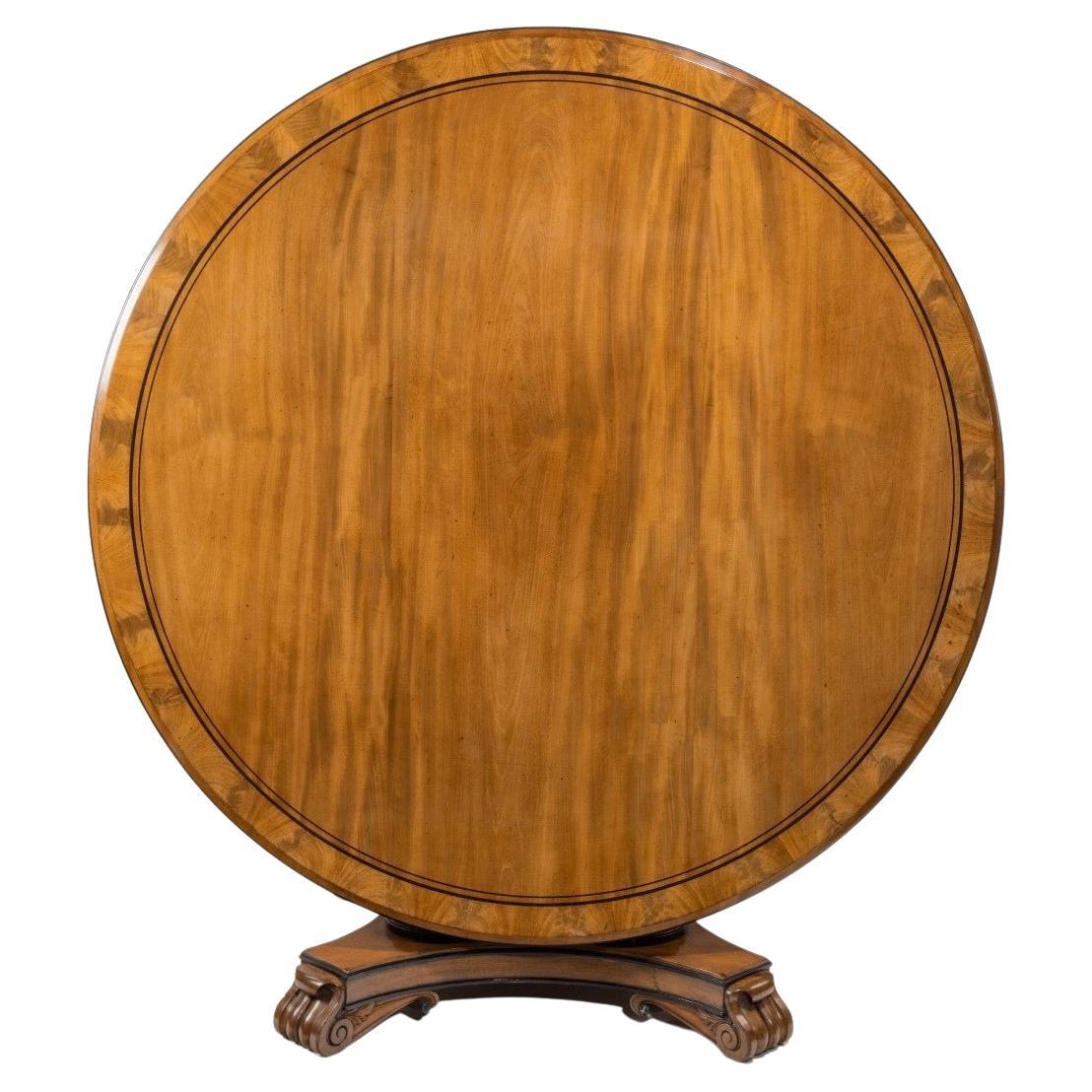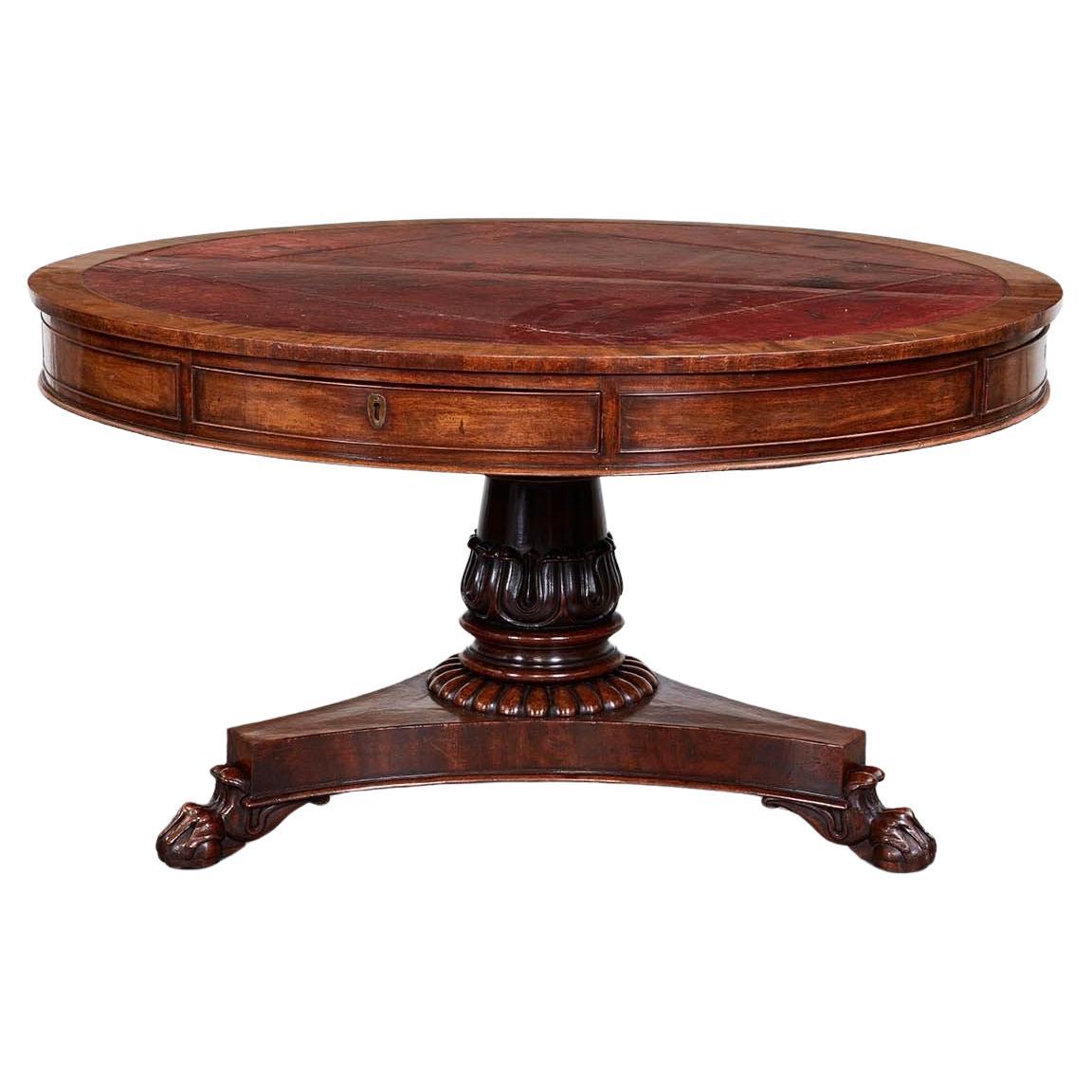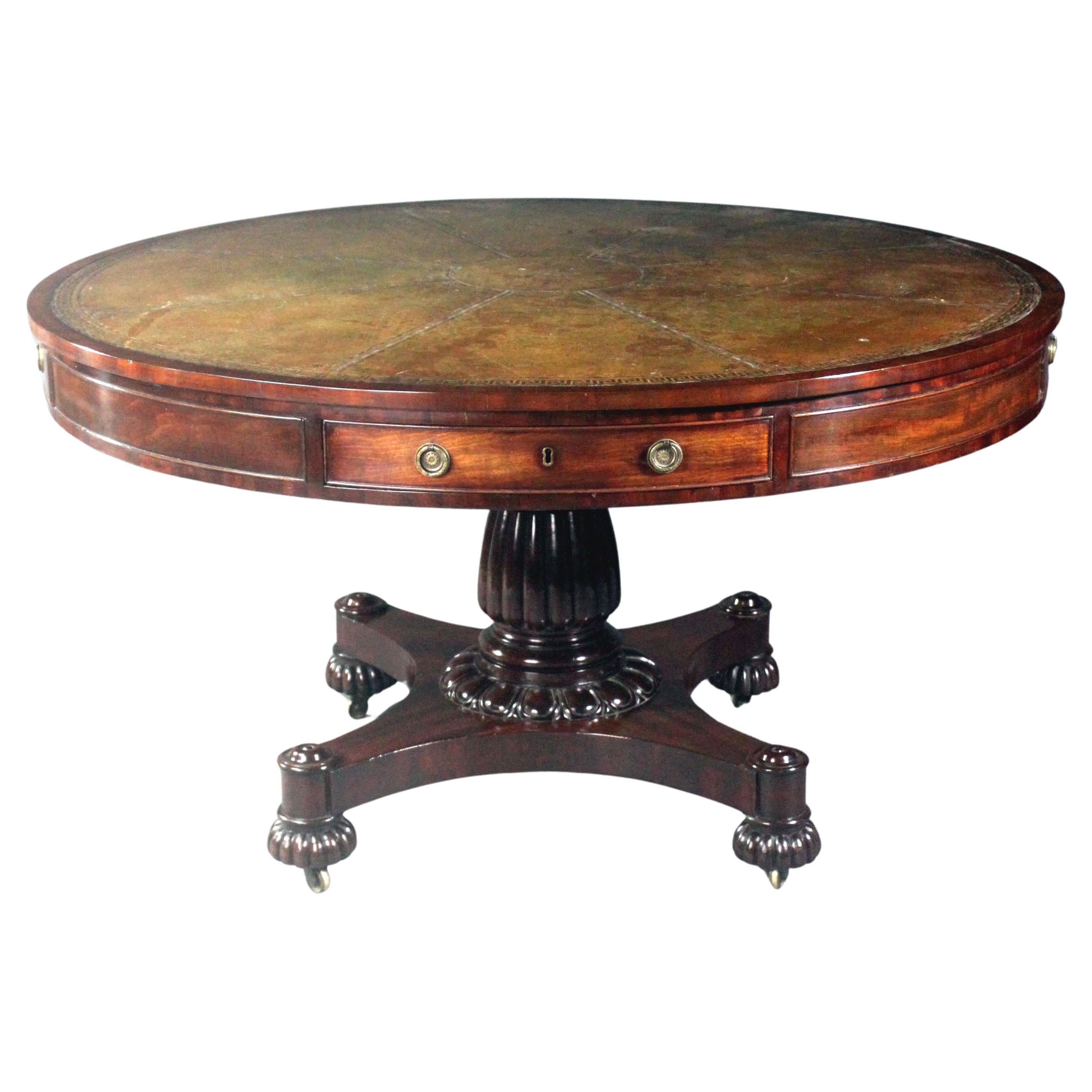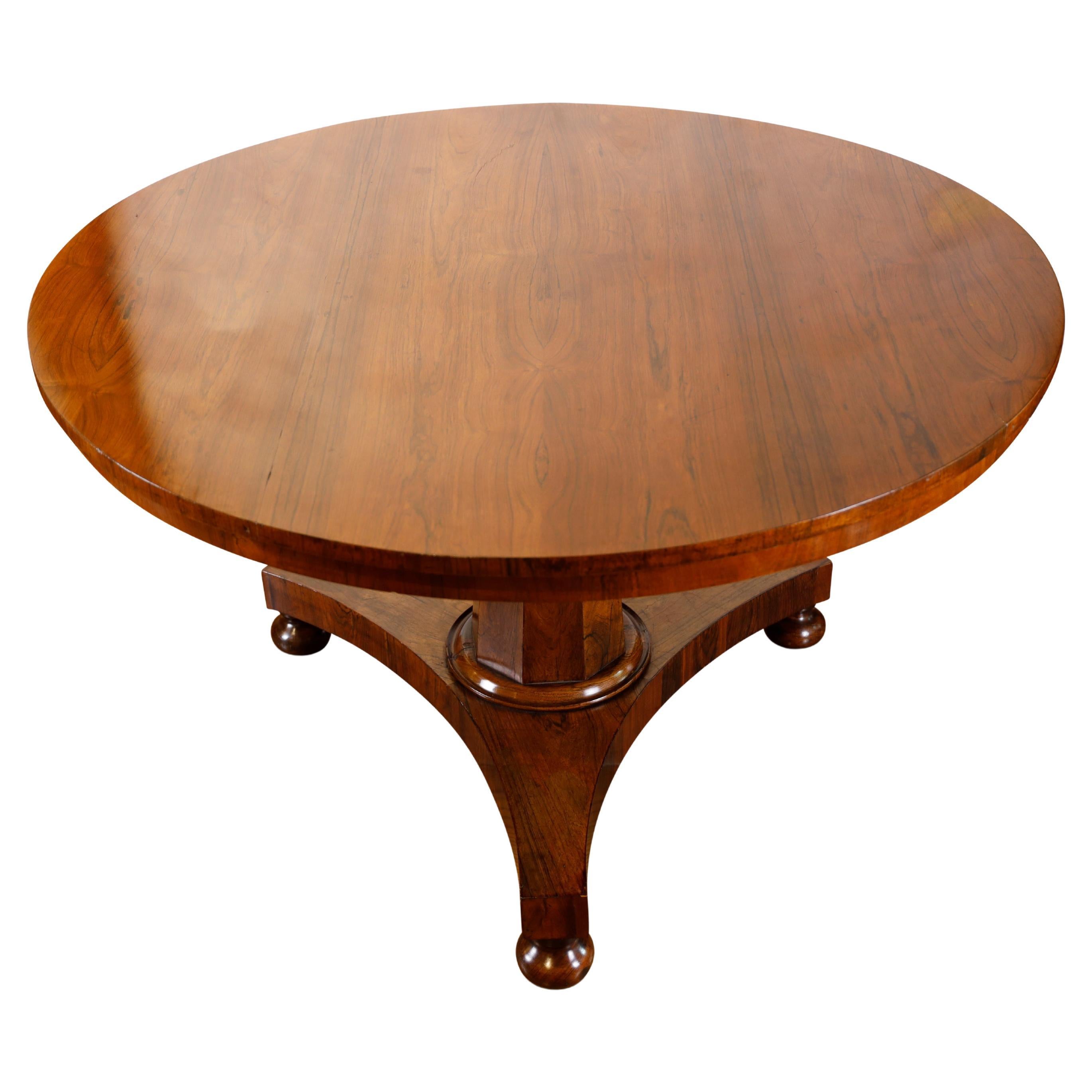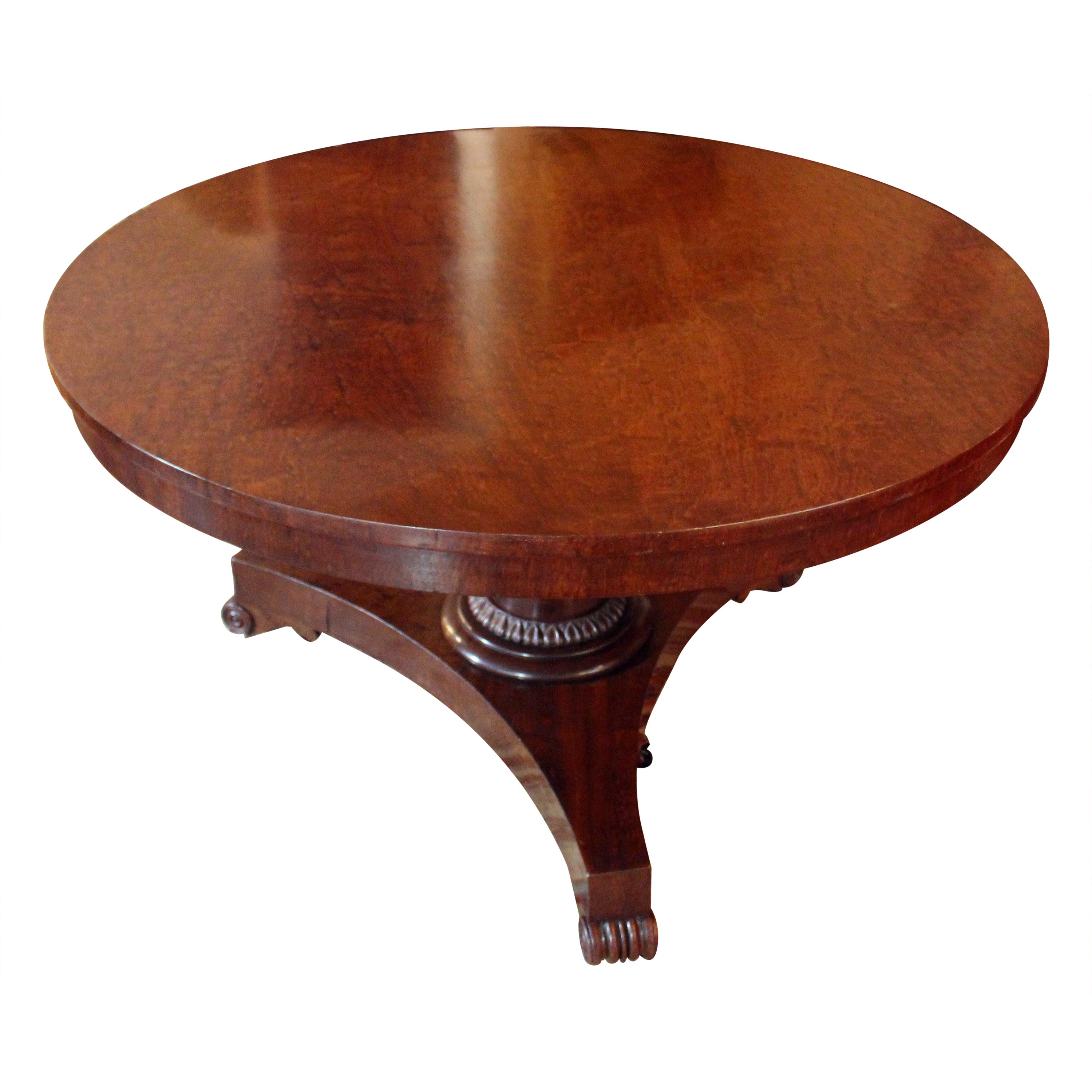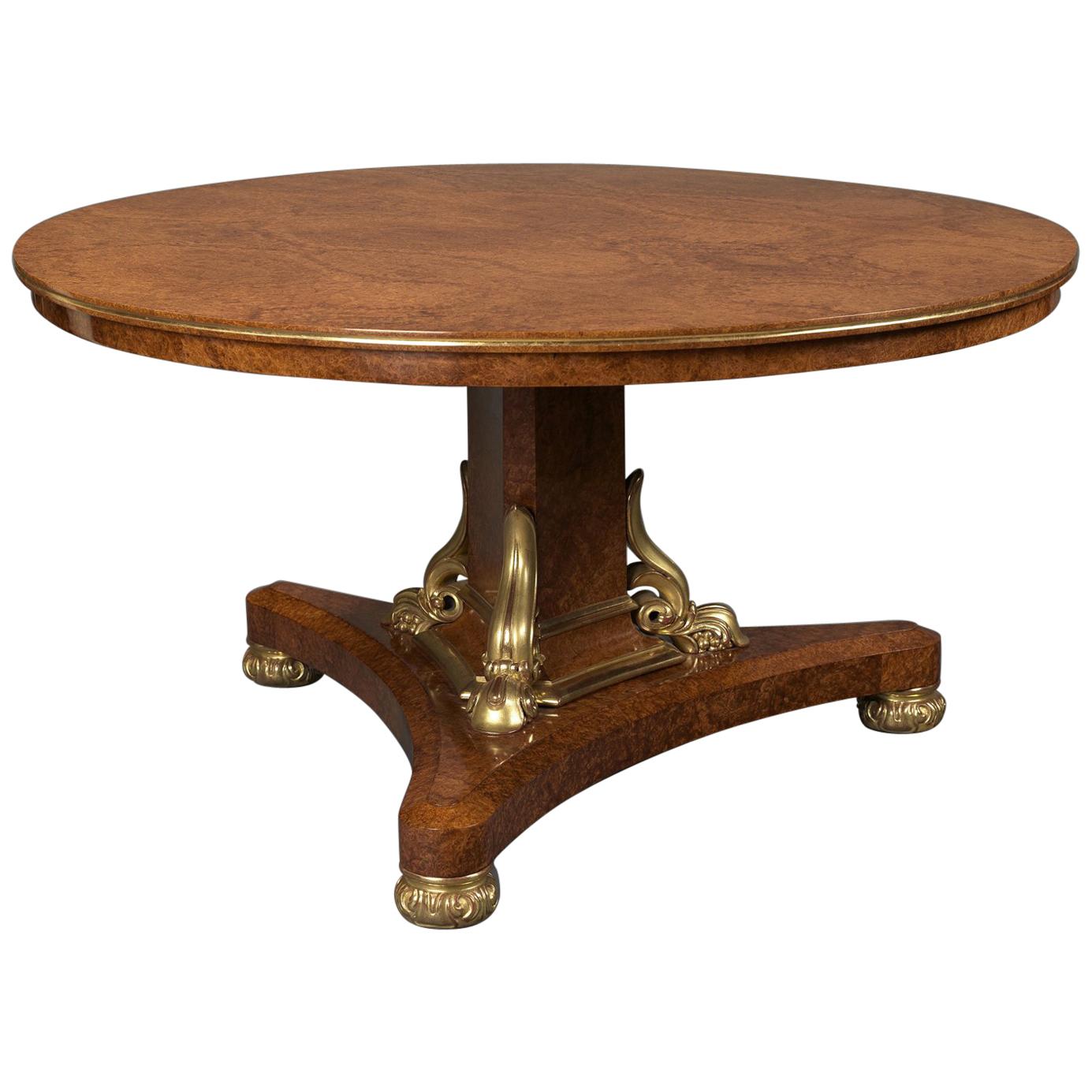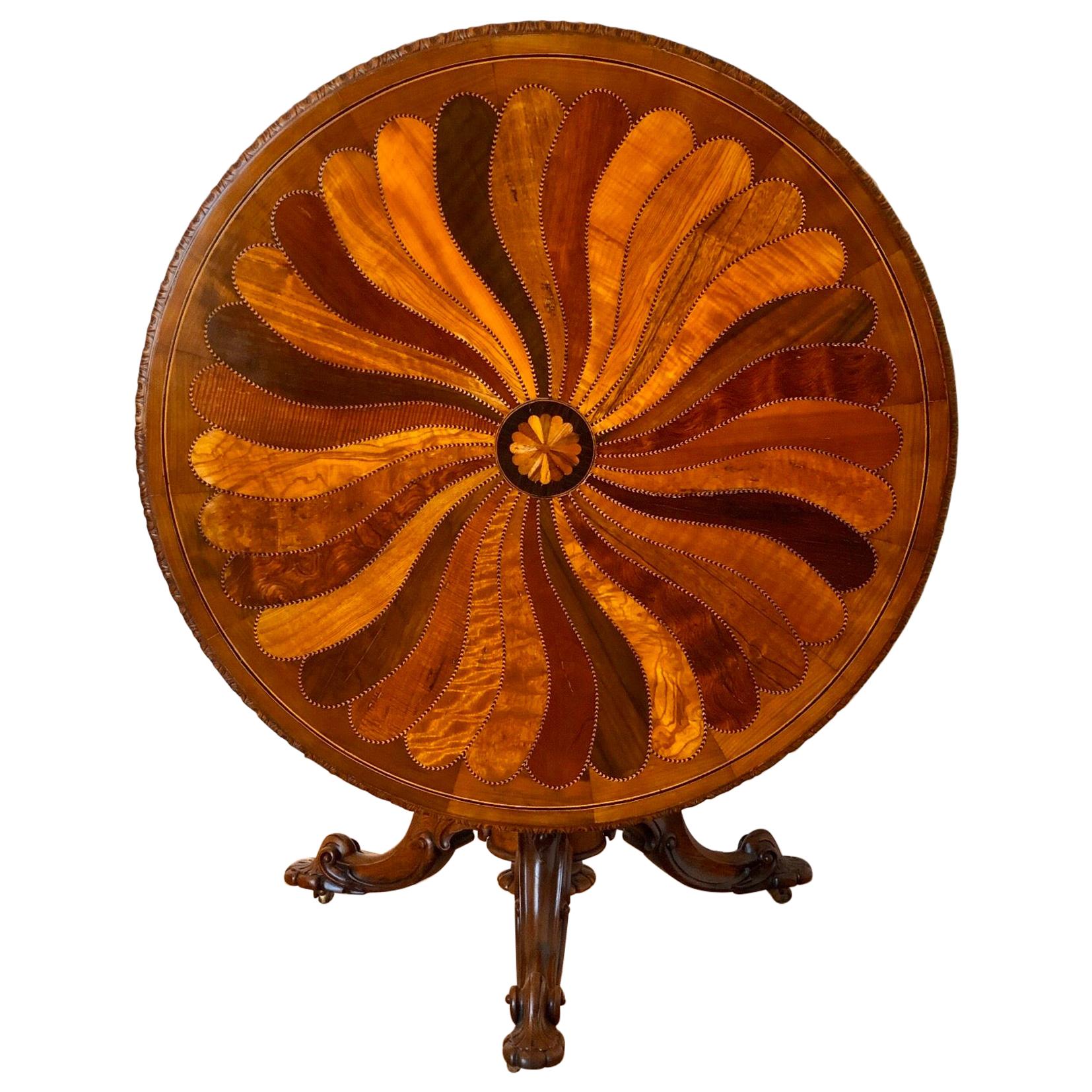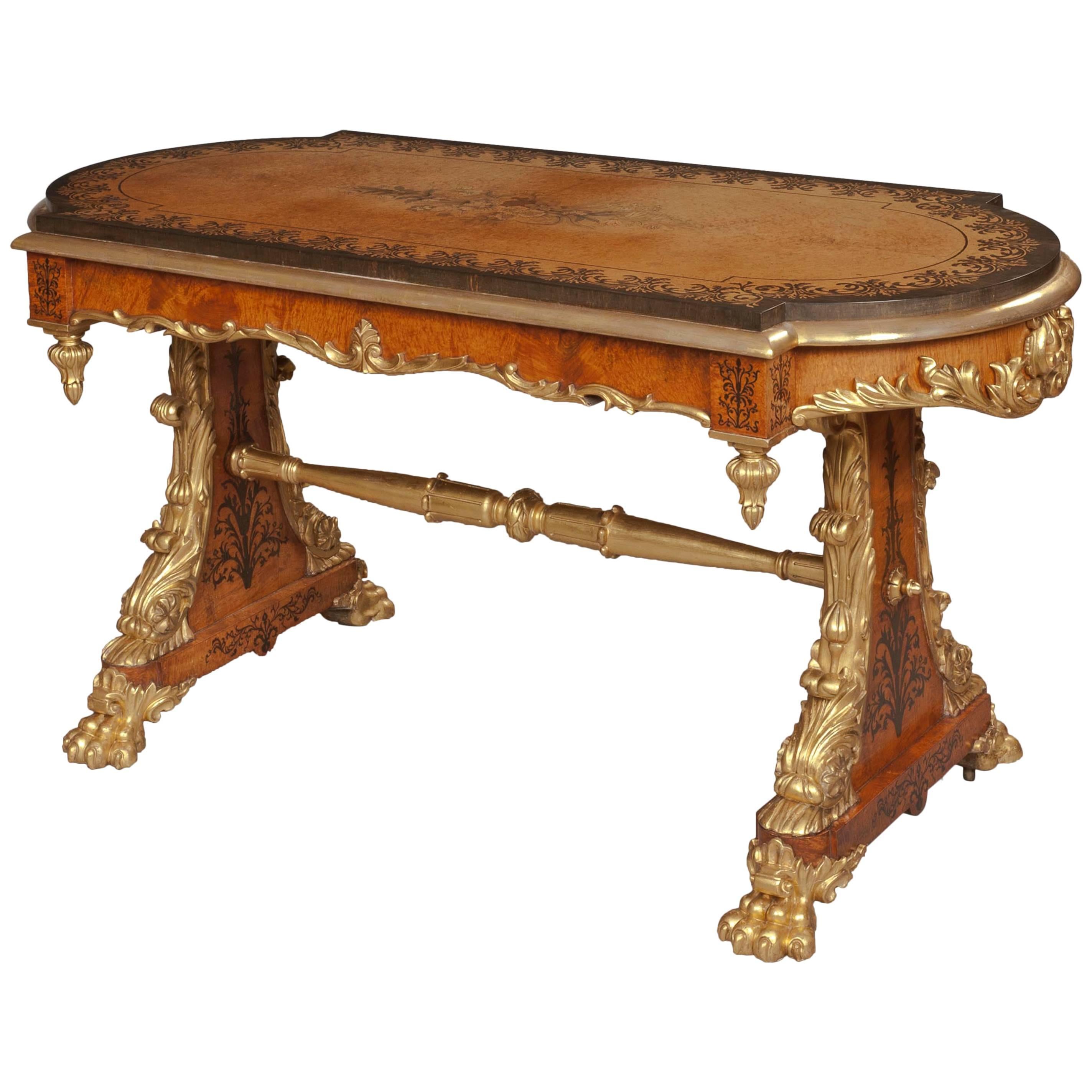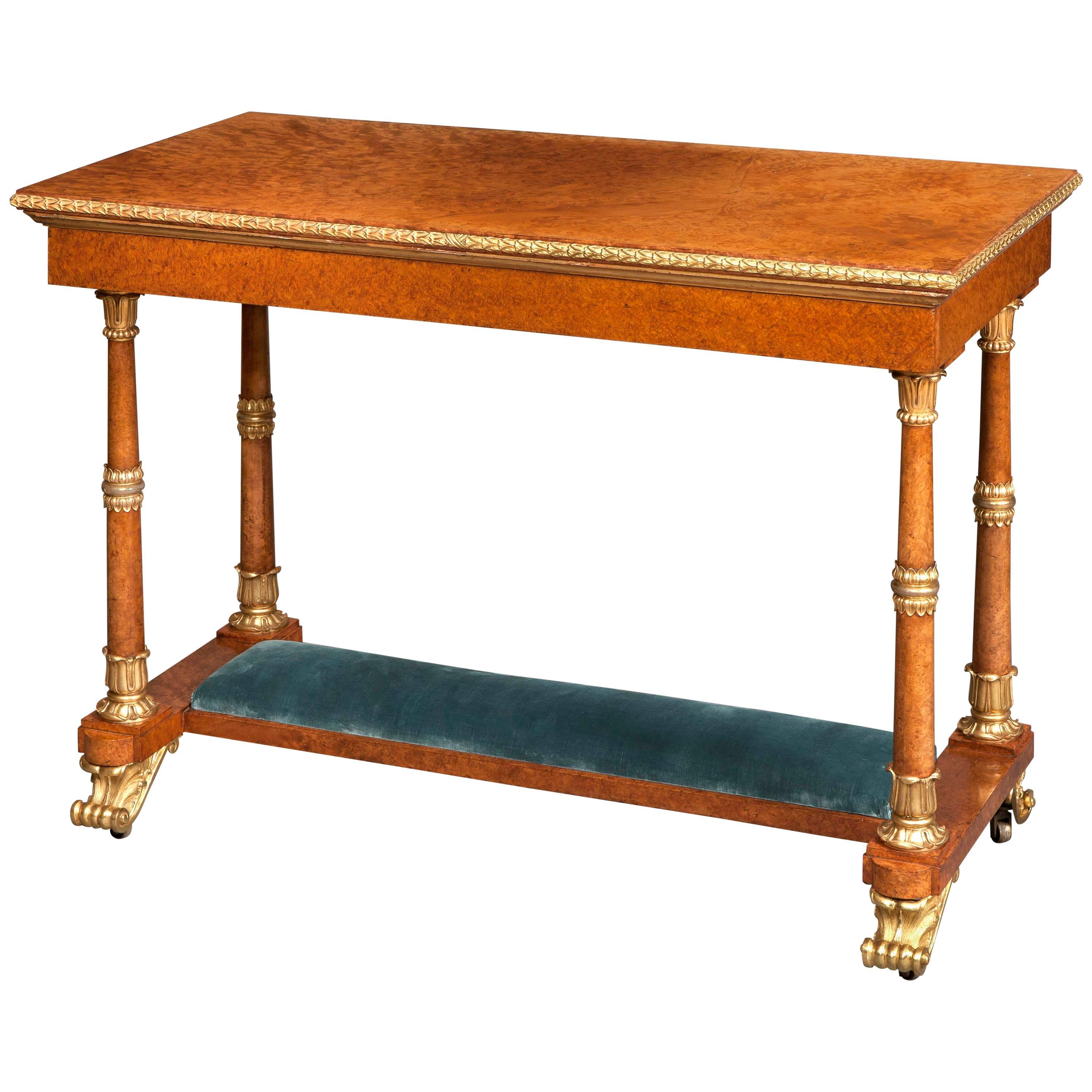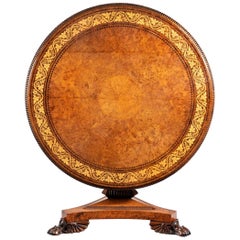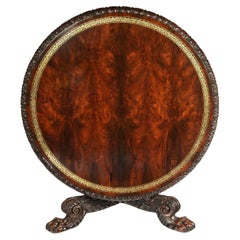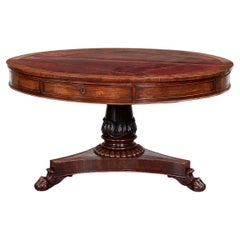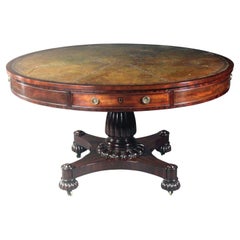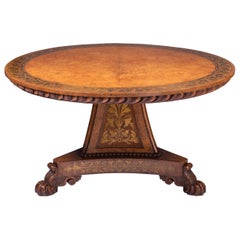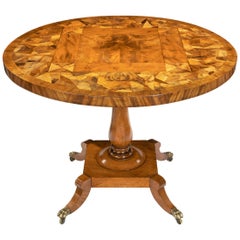
George IV Tilt-Top Specimen Table
View Similar Items
Want more images or videos?
Request additional images or videos from the seller
1 of 10
George IV Tilt-Top Specimen Table
About the Item
- Dimensions:Height: 30.5 in (77.47 cm)Diameter: 41 in (104.14 cm)
- Style:George IV (Of the Period)
- Materials and Techniques:
- Place of Origin:
- Period:
- Date of Manufacture:circa 1825
- Condition:Wear consistent with age and use.
- Seller Location:Lymington, GB
- Reference Number:1stDibs: LU973012718541
About the Seller
5.0
Recognized Seller
These prestigious sellers are industry leaders and represent the highest echelon for item quality and design.
Established in 1982
1stDibs seller since 2013
108 sales on 1stDibs
Typical response time: 1 hour
Associations
LAPADA - The Association of Arts & Antiques Dealers
More From This SellerView All
- George IV Ebony-Inlaid Mahogany Tilt-Top Centre TableLocated in Lymington, HampshireA George IV ebony-inlaid mahogany tilt-top centre table, the circular top with a flame-veneered cross-banded border above a moulded frieze with ebony stringing and four small rectang...Category
Antique 1820s English George IV Center Tables
MaterialsEbony, Mahogany
- George IV Tilt-Top Centre Table by George BullockLocated in Lymington, HampshireA George IV tilt-top centre table by George Bullock, the circular top with an amboyna field centred on a circle of brown oak, burr yew and holly, the border decorated with a floral m...Category
Antique 19th Century British George IV Card Tables and Tea Tables
MaterialsOak, Holly, Yew, Amboyna
- A large George IV brass inlaid rosewood centre table attributed to GillowsBy Gillows of Lancaster & LondonLocated in Lymington, HampshireThe circular tilt top has a central field of book-matched, figured rosewood within a broad band of cut brass inlay. The edge is boldly carved with an acanthus and dart border. The central support is hexagonal in section with a broad central flange, raised on three powerful and ornately carved legs. The knees are presented as bold acanthus carved and gadrooned volutes. The lions’ paw feet have clearly defined knuckles and claws and enclose the original brass castors. English, circa 1825. See also S. Stuart, Gillows of Lancaster and London 1730-1840, Antique Collectors’ Club, Woodbridge, 2008, Vol II, pl. E.5, which shows a pattern for this table in a drawing room layout designed for G.Bamford about 1820-30. The drawing also shows a pair of bergères and a sofa which correspond to a suite supplied by Gillow & Co. in 1824 to Thomas Wynn...Category
Antique 1820s English George IV Center Tables
MaterialsBrass
- Italian Micro Mosaic and Specimen Marble-Top Centre TableLocated in Lymington, HampshireA Neoclassical pietra dura, micro mosaic and walnut centre table, the circular black marble top with a large central micro mosaic roundel depicting St Peter’s Square, Rome, surrounde...Category
Antique 1880s Italian Center Tables
MaterialsMarble
- Regency Rectangular Rosewood Tilt-Top Table Attributed to GillowsLocated in Lymington, HampshireA Regency rectangular rosewood tilt-top table attributed to Gillows, the rectangular top with bookmatched veneers set upon a shaped and reeded support with four splayed hip legs, Eng...Category
Antique 1810s English Tables
MaterialsRosewood
- An unusual George IV specimen marble backgammon table attributed to GillowsBy Gillows of Lancaster & LondonLocated in Lymington, HampshireAn unusual George IV specimen marble backgammon table attributed to Gillows. This rectangular table is strongly attributed to Gillows. It has a rectangular top inlaid with a central chess board flanked by two backgammon fields, all inlaid with a multitude of specimen marbles. One edge carved and gilded with the Latin motto ‘Turpe est in patria vivere et patriam ignorare’. The oak base has a drawer for cards and playing pieces, all raised on a square section support with four splayed legs and the original brass castors. English, circa 1830. Provenance: Geoffrey Bennison Ltd, London, November 1983 The Mermaid House Collection, St. John’s Wood, London Property of a gentleman Private American collection The form of the base of this table is related to several known Gillows commissions from the late Regency period and the quality of the cabinet work also suggests that firm attribution to the firm. Backgammon tables, rather than more general games tables, are unusual at this date and the use of inlaid specimen marbles in the top suggests a client of wealth. Additionally, the Latin text on the edge of the table provides further clues. The text, Turpe est in patria vivere et patriam ignorare, translates as “it is shameful to live in your homeland and not know it”. This phrase dates back to antiquity but rose to prominence once again in the mid-18th century when used by the botanist and key Enlightenment figure Carl Linnaeus in his work on the native flora of Sweden. The combination of this phrase and the use of native English timbers and marbles is promoting English raw materials and craftsmanship at a time when the noble and the wealthy were focussed on European pietra dura tables. Mermaid House in St John’s Wood was re-designed by Chester Jones...Category
Antique 1830s English George IV Game Tables
MaterialsMarble
You May Also Like
- George IV Library Drum TableBy Gillows of Lancaster & LondonLocated in Greenwich, CTVery fine George IV period mahogany drum table, the beautifully patinated morocco leather top with tooled edge and mahogany banding over four drawers incorporated into shallow apron,...Category
Antique 1820s English George IV Center Tables
MaterialsLeather, Mahogany
$22,500 - George IV Mahogany Drum TableLocated in Bradford-on-Avon, WiltshireGeorge IV Mahogany Drum Table A good George IV mahogany drum table on carved reeded stem, platform base and reeded bun feet; elegant shallow top, oak lined drawers and attractive old...Category
Antique 1820s English George IV Center Tables
MaterialsMahogany
- George IV Burr Oak Center TableBy George BullockLocated in Dublin, GBA fine George IV burr oak and brass inlayed centre table The circular top with a brass inlaid border, above a carved gadrooned edge, resting on a p...Category
Antique 1810s English George IV Tables
MaterialsBrass
$39,541 Sale Price20% Off - George IV Rosewood Circular Center TableLocated in Woodbury, CTGeorge IV rosewood circular center table with tapering octagonal column ending in triped platform base raised on bun feet with hidden casters. Table tilts up.Category
Antique Mid-19th Century English George IV Center Tables
MaterialsRosewood
- Early 19th Century Regency to George IV Tilt-Top Center TableLocated in Chapel Hill, NCEarly 19th century Regency to George IV tilt-top center table or loo table. Stamped Gillows. English. Mahogany. Plum pudding mahogany top of great figure. Rich mahogany base with acanthus ring...Category
Antique Early 19th Century English Regency Center Tables
MaterialsMahogany
$4,400 Sale Price20% Off - George IV Centre Table Attributed to Thomas & George Seddon, circa 1830By Thomas & George SeddonLocated in Brighton, West SussexA Very Fine George IV Parcel-Gilt Amboyna Centre Table Attributed to Thomas & George Seddon. English, Circa 1830. The table is of finely figured Amboyna with a circular tilt-top above a triform column with parcel-gilt scrolled supports. It is raised on a conforming plinth base with foliate carved feet and concealed castors. George Seddon was the eighth child of John Seddon of Blakelea, Lancashire. His father apprenticed him to George Clemaphon of Cripplegate to learn cabinet making. He became a master cabinet maker. (He was Master of the Joiner’s Company in 1795). In the early 1750s he was sufficiently successful to acquire London House, Aldersgate Street. It consisted of extensive workshops, where furniture was made, and showrooms to display the finished products. London House had formerly been a palace of the Bishops of London. The panelled state-rooms were ideal for the display of fashionable furniture; and the chapel and library made convenient workshops. When Seddon married, he converted the garden house and infirmary into the family home. Seddon was the biggest furniture maker of his time. His furniture store covered a two acre site in Aldersgate Street. His workshop there was described by London visitor Sophie v. La Roche in 1786: "We drove first to Mr. Seddon's, a cabinet-maker,...He employs four hundred apprentices on any work connected with the making of household furniture—joiners, carvers, gilders...Category
Antique Early 19th Century English George IV Center Tables
MaterialsWood
Recently Viewed
View AllMore Ways To Browse
English Tilt Top Table Square Top
Circular Carved Tables
Art Modern Center Table
Marble Top Center Table French
19th Century Marble Top Center Table
French Louis Center Table
Square Center Table
French Centre Table
Mahogany Circular Table
Centre Tables Wood
Modern Centre Table
French Center Table With Marble Top
19th Century Mahogany Center Table
Antique Round Pedestal
Rectangular Center Tables
Rectangular Center Table
Antique Round Mahogany Table
Mahogany Antique Round Table
